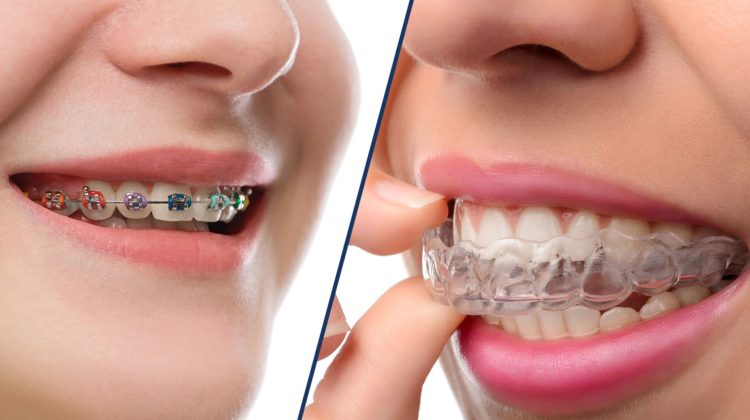
Clear Aligners vs. Traditional Braces: What Clinics Should Know
The decision to offer traditional braces or clear aligners is a pivotal one for any dental or orthodontic clinic. While traditional braces have long been the gold standard for correcting a wide range of orthodontic issues, clear aligners have revolutionized the industry, offering a discreet and convenient alternative. For a clinic, the choice is not just about patient preference; it’s a strategic business decision that impacts everything from clinical workflow and staff training to profitability and market positioning.
This article provides a comprehensive overview for dental professionals, breaking down the key considerations of both treatment modalities. By understanding the unique demands and advantages of each system, clinics can make an informed choice that aligns with their business goals and patient demographics.
Clinical Considerations: The Right Tool for the Right Case
From a clinical standpoint, the most significant difference between clear aligners and traditional braces lies in their biomechanics and the types of cases they are best suited to treat.
- Traditional Braces: These fixed appliances are the workhorses of orthodontics. With brackets bonded to the teeth and an archwire running through them, braces provide superior control over complex tooth movements, including severe rotations, significant bite corrections (overbites, underbites), and closing large gaps. They are the go-to solution for intricate malocclusions that require precise control over root and crown movement.
- Clear Aligners: Aligner therapy is built on a series of custom, thermoplastic trays that apply gentle pressure to gradually shift teeth. While early versions were limited to mild to moderate cases, advancements in technology—such as attachments and smart-force features—have significantly expanded their capabilities. Today, clear aligners can effectively treat a wide range of cases, from simple crowding and spacing to moderate bite issues. However, for extremely complex cases requiring significant torque or anchorage, braces often remain the more reliable and predictable option.
For a clinic, offering both modalities is a powerful way to serve a broader patient base. It allows you to confidently treat both straightforward cosmetic cases and complex functional ones, establishing your practice as a comprehensive orthodontic provider.
Workflow and Practice Management
The operational workflow for a clinic differs dramatically between the two treatment types.
- Traditional Braces: The workflow is very hands-on and requires significant chair time. Initial appointments involve bonding brackets and wires, followed by monthly or bi-monthly adjustment visits to tighten the archwire and make small corrections. These appointments are crucial for treatment progress, but they can be a major time sink.
- Clear Aligners: The workflow for aligners is more digitally driven and requires less hands-on time. The process begins with a digital scan of the patient’s teeth, which is used to create a virtual treatment plan. Once approved, a series of aligners are manufactured and shipped to the clinic. Patient visits are typically less frequent—often every 6-8 weeks—and are shorter, primarily to check on progress and provide the next sets of trays. This streamlined workflow frees up chair time, allowing clinics to see more patients and increase overall efficiency.
The digital nature of aligner therapy also reduces the need for physical impressions, minimizes lab work for the clinic, and automates much of the planning process, reducing the chance of human error.
Staff Training and Patient Management
Each treatment option requires a different skill set from the clinical team.
- Staff Training: While traditional braces require extensive training for proper placement, adjustments, and repairs, clear aligner therapy focuses more on patient education, digital planning, and progress monitoring. Your staff needs to be proficient in using intraoral scanners, interpreting digital treatment plans, and training patients on the importance of compliance.
- Patient Compliance: This is a major differentiator. With traditional braces, compliance is not a concern as the appliance is fixed. For clear aligner therapy, however, patient adherence is paramount. The success of the treatment relies on the patient wearing their aligners for 20-22 hours a day. Your staff must be skilled in motivating patients and clearly communicating the consequences of non-compliance.
Financial Implications for the Clinic
The revenue models for braces and aligners also have distinct characteristics.
- Traditional Braces: The cost for the clinic includes materials (brackets, wires, bands) and significant chair time. While the profit margin can be high, it is tied directly to the number of appointments and the time spent on each case. Unexpected repairs or extended treatment times can reduce profitability.
- Clear Aligners: The cost for the clinic is primarily the lab fee for the aligners, which can be a significant upfront expense. However, this is often offset by the reduction in chair time and staff hours per case. The streamlined workflow allows a clinic to take on more cases with the same number of staff, leading to a higher volume of patients and increased revenue potential. Furthermore, a lost or damaged aligner can often be an additional revenue stream.
Conclusion: Making an Informed Choice
Both clear aligners and traditional braces are highly effective orthodontic solutions, but they are not interchangeable. For dental and orthodontic clinics, the decision to offer one, the other, or both, should be based on a careful consideration of clinical capabilities, practice workflow, staff training, and financial goals.
By embracing both modalities, a clinic can cater to a wider audience—from younger patients with complex needs who benefit from braces, to adults and teens seeking a discreet, convenient option. The future of orthodontics lies in this balanced approach, where technology and traditional techniques work in harmony to provide the best possible care for every patient.
